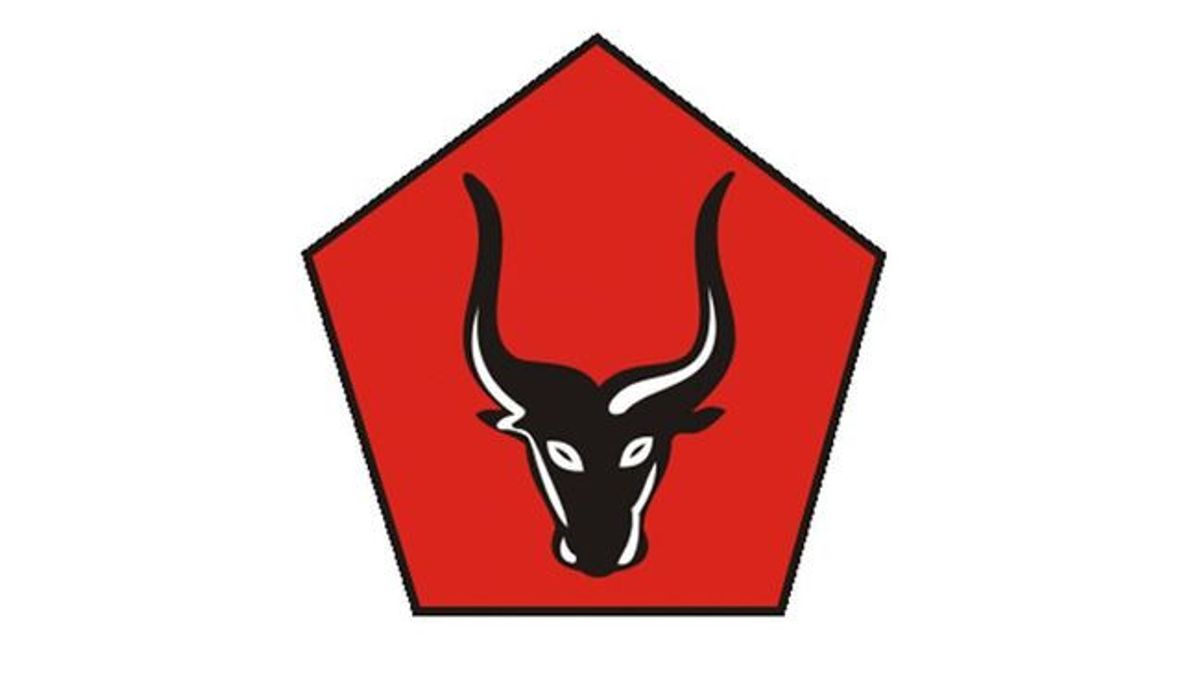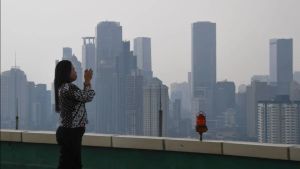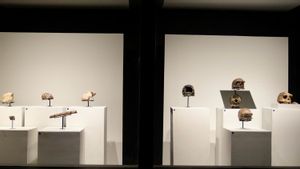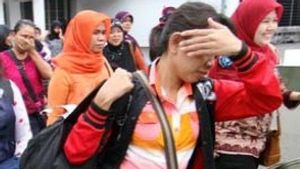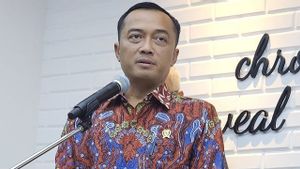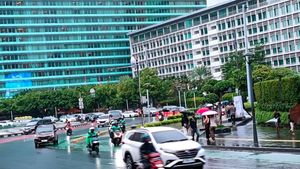JAKARTA - The excitement of political parties in Indonesia began with the issuance of the "Government Declaration on November 3, 1945" which was marked by the government's support for the birth of political parties in society. However, the number of parties narrowed as they entered the New Order regime.
The number of parties was merged and the Indonesian Democratic Party (PDI) was one of them. The dynamics of Indonesian politics immediately changed, adapting to developments.
In the old order era, there were nine parties recognized by the government, namely PNI, NU, Parkindo, Catholic Party, PSII, IPKI, Perti, Murba Party and Parmusi. However, when he entered the New Order era in the 1970s, Suharto had a different view.
As Lili Romli wrote in his journal "The Institutional Problem of Political Parties in Post-New Order Indonesia" published by LIPI (2016). Those who lived during the New Order era saw that the conditions at that time were the source of chaos and disrupted the stabilization between political parties.
This is based on the experience of Parliamentary Democracy, where the government is always changing, which is generally due to the actions of political parties. In this regard, the steps taken by the New Order were to simplify the number of political parties.
After the 1971 Election to be precise in 1973 the two groups were required to fuse. The nine existing political parties were grouped into two groups.
As quoted by Stefan Eklof in "Power and Political Culture in Suharto's Indonesia" (2003) The first group with a spiritual wing consists of 7 religious parties, while the other is a nationalist party consisting of the PNI, Murba and PKI parties.
With this fusion, the existing political parties became two with a spiritual wing to become the United Development Party (PPP) and the nationalist one to become the PDI, while there is one other political force, namely Golkar.

Forced to become PDI
Not all parties agree on the idea of fusion or fusion of the party. The idea of merging the party into two axes was rejected by the Christian Party, Parkindo and the Catholic Party according to Eklof (2003). They refuse to be merged with an Islamic party.
The leaders of the two parties wanted to create separate parties, and there seemed to be quite a few who supported the idea of forming a single Christian Party. The idea of forming a party that represented the voice of Christians, however, was rejected by President Soeharto. However, they were allowed to join the nationalist axis party.
What can I do, because there is no other choice, the Christian axis can't help but agree. Finally, on January 10, 46 years ago or 1973, two religious parties, namely Parkindo and the Catholic Party together with the Indonesian National Party (PNI), the People's Consultative Party (Partai Murba) and the Association for Supporting Indonesian Independence (IPKI) merged into the Indonesian Democratic Party.
PDI is committed to the Pancasila ideology as the basic principle of its struggle. At the beginning of its establishment, in 1973, PDI was led by Mohammad Isnaeni.
The atmosphere of the participants of the 47th Anniversary and Rakernas I of the PDI Perjuangan when entering one of the access doors to the opening ceremony at the JI Expo Kemayoran, Jakarta, Friday (10/1/2020). # PDIPerjuangan pic.twitter.com/6cRghsSJt4
- PDI Perjuangan (@PDI_Perjuangan) January 10, 2020
The beginning of the PDI seemed to be forced. Apart from the case of the Christian axis which had no other choice but to join the nationalist axis which later became the PDI, within the PDI there were also cadres who were not in line.
They came from the IPKI party and the Murba Party. As it is known that the IPKI was a very anti-PKI party during the Sukarno regime, in this case its position was at odds with the Murba Party.
It seems that because of the many differences in views within this party, the PDI had become a party that was not too significant or the New Order called it a "small party". According to Eklof (2003), this term refers to the weak power of the party during the 13 years since the establishment of the party bearing the bull logo.
"And the absence of any real effort to criticize the regime or compete in political hegemony contests makes it less valuable," Eklof wrote.
The party was stagnant until there was a revival of enthusiasm to rehabilitate Sukarno's name. In 1986 the PDI, under Soerjadi's leadership, began to approach the Sukarno family, namely Megawati Soekarnoputri and Guruh Soekarnoputra, to join the PDI.
The joining of Sukarno's family in the PDI received positive responses from both Sukarno's (PNI) supporters and from young voters. This interest continued to increase until Megawati was finally elected by acclamation as Chair of the PDI in 1993.
However, the Soeharto government was not satisfied with Mega's election as the head of the PDI. Mega was then expelled at the PDI Congress in Medan in 1996, which elected Soerjadi as the chairman of the PDI. This is where the PDI split began.
The PDI outbreak reached its peak on the 27 July 1996 incident or commonly known as the Kudatuli incident (the Twenty-Seven July Riots). This incident was the forcible takeover of the PDI DPP office at Jalan Diponegoro 58, Central Jakarta, which was then controlled by supporters of Megawati Soekarnoputri. The attack was carried out by the supporters of Soerjadi (the General Chair of the PDI Congress version in Medan) and assisted by officers from the police and the TNI.
Since that incident, the name PDI was later changed to the added Perjuangan behind it. This incident also marked the birth of the Indonesian Democratic Party of Struggle (PDIP).
The English, Chinese, Japanese, Arabic, and French versions are automatically generated by the AI. So there may still be inaccuracies in translating, please always see Indonesian as our main language. (system supported by DigitalSiber.id)
